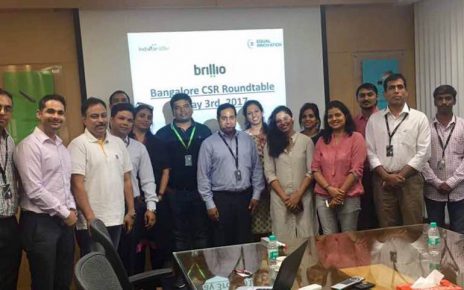Recently, a peer from the industry working at a global fashion brand sought advice on corporate social responsibility (CSR) communication. According to her, she conducts many engaging events, collaborates with stakeholders on numerous initiatives and invests heavily on community work that influences society. Despite this, she felt there seemed to be limited understanding of the value the business adds. Also, employees aren’t motivated enough to pitch in for volunteering their time and effort. Nor did it help that the organization was conservative and uncomfortable in talking of their CSR engagements. How must she then go about communicating her organization’s CSR work?
Every organization – small or big, does their bit for society. From employing people from the locality to improving the well-being of the community; from reducing social deprivation to protecting the environment. Some countries, like India, has mandated CSR spending of 2% of their average new profits for the preceding three years. Companies that do communicate their CSR are known to build stronger relationship with stakeholders, have more legitimacy, garner increased trust and improve employee engagement. Culturally, CSR is perceived differently in various parts of the globe. Considering the local nuances helps in making effective decisions with CSR communication.
However, organizations are often in a dilemma. Do they stay low-key about the social impact made or broadcast messages and be perceived as ‘boastful’? It is a fine balance of doing good social work and yet not being viewed as brash.
CSR reporting has progressed from one-way to two-way communication over the years. Likewise, the channels and approaches to communication has evolved blending simple website reports with sustainable communication. From websites to public relations, from advertising to independent reports; there are many ways to get your messages out.
It matters who communicates, when and where while the ‘why’ behind an organization’s CSR is a basic expectation. Organizations are expected to take a stand on topics that matter for stakeholder. ‘How’ they engage can make or mar their reputation. To communicate effectively, it is essential to be authentic, transparent and share the difference you are making for stakeholders.
Intent: When the organization’s actions match words used to communicate CSR, there are more chances of stakeholders believing in your work. Having your staff aligned to your CSR vision is of primary importance to communicate intent. Employees have social ties and therefore they are your biggest advocates. When your staff understand your ‘why’ of doing CSR, they will be inspired to spread the word far beyond what regular channels of communication can do. Having staff experience the CSR impact and play the role of storytellers can enhance how stakeholders perceive the brand.
Approach: Having a simple, clear and credible methodology to communicating your CSR engagement improves your reputation and enhances trust. It can be a model for connecting your staff, managing regulatory expectations and monitoring projects. When stakeholders know how you go about your CSR work, what you do to involve stakeholders, approaches you take to listen to the communities and incremental improvements you are making to the processes, they will be more confident in your plans.
Impact: Just communicating what your organization thinks is valuable or benefits the products or services you do isn’t CSR. Likewise, when the focus is on the effort, you can possibly miss the effect. Communicating CSR is about focusing on the impact. Not about the numbers. It is about how your organization is influencing the world around you. By mapping your stakeholders, understanding what value they expect and how they prefer to receive your communication can direct your efforts better. What matters most to stakeholders is how committed your organization is to make a lasting impact.
In summary, communicating your CSR activities has a positive impact on the organization’s reputation and how engaged your staff feels. By focusing on the intent, approach and impact organizations can raise the level of acceptance with CSR communication while addressing the growing expectations from stakeholders to be direct, transparent and inclusive.
What’s your point of view? Share it here.
Interested in similar articles? Visit my Linkedin page (https://www.linkedin.com/in/aniisu/) to read more.



